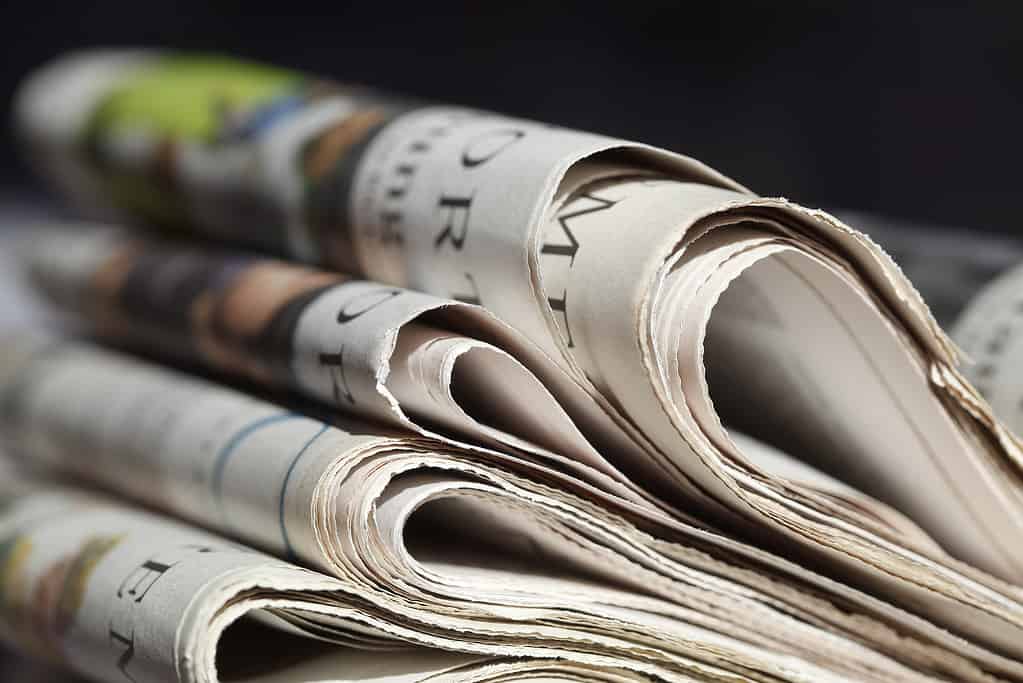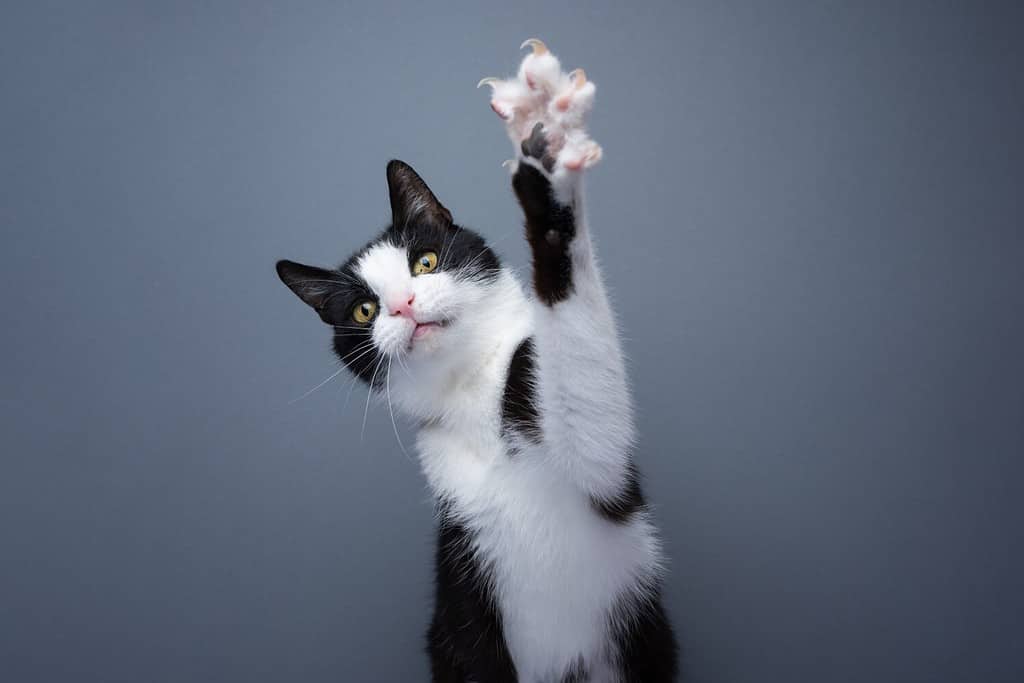If you’re looking at something really appealing, you might call it “the cat’s meow.” It sounds like something you’d say about catnip or something at the pet store. But actually, the phrase is commonly used for everyday things of favor. While it is a bit of an older sentiment, used most often in the 1920s and fading out, you may still hear it every now and then.
“The cat’s meow” means anything or anyone who is awesome, enjoyable, or impressive. It was coined around the same time as “the cat’s pajamas” and “the bee’s knees.” Both of these phrases pretty much mean the same.

If you’re looking at something really appealing, you might call it “the cat’s meow.”
©Namay Dolphin/Shutterstock.com
Possible Origins of “The Cat’s Meow”
In the early 1900s, a cartoonist had become popular by the name he signed, Tad. Thomas Aloysius Dorgan, better known as Tad Dorgan, was the creator and artist behind Indoor Sports. Indoor Sports was just one of the many strips on which he worked. During this time, he coined many popular phrases that we still use today.
If you’ve ever heard the phrase “for crying out loud!” you have Tad Dorgan to thank for it. He coined this sentiment along with many more, including “the cat’s meow.” Some of his other popular slang was calling stupid people “dumbbells,” calling nonsense “applesauce,” and eyeglasses “cheaters.” It’s clear from the slang he coined that Tad had a creative and not-too-serious outlook on life that made him an excellent cartoonist. He is also to thank for “the cat’s pajamas” a less-used term that means the same as “the cat’s meow.”
In the 1920s, the Flapper community used and made the phrase “the cat’s meow” even more popular. Then, a group of young women began to live a lifestyle that was not acceptable by most of society. They drank illegal alcohol, wore short revealing clothing, and were sexually promiscuous. They did this out of a certain zest for life, in fear that they would lose their youth if they didn’t enjoy it to the maximum. It makes sense, then, that the places we most often hear this term throughout history and literature are bars, drive-ins, and other places where the ‘party folk’ gathered.

Tad Dorgan, a cartoonist popular for
Indoor Sportsfirst coined “the cat’s meow” and “the cat’s pajamas” a lesser-used term that means the same as “the cat’s meow.”
©Wirestock Creators/Shutterstock.com
Where Did ‘Meow’ Come From, Anyway?
Wondering how the sound a cat makes became a word in the first place? The word ‘meow’ is actually much older, thought to have come about around 1842. While it is a mystery as to who coined the first ‘meow,’ there is an even older poem with the word ‘mew’ in it. In 1550, John Heywood wrote A Quiet Neighbor, in which he said, “I neuer herd thy catte once mew.” Perhaps Heywood is to thank for coining the first version of the modern term ‘meow.’
Examples of Everyday Use
The phrase “the cat’s meow” is not as prevalent today as it was in the 1920s jazz era, but you may still hear it occasionally. It still carries the same meaning of calling something “cool” or “awesome.” With new slang popping up every day, the phrase likely just became lost in the past.
A Real-Life Example
As a cat lover myself, I’d love to get more in the habit of calling something “the cat’s meow.” Most often, I feel I’ve heard the phrase used in old movies. The main character goes to a bar where they meet their friend and their new ride. The new car is sparkling and overly done, leading the main character to call it “the cat’s meow.”
In another, more modern movie by Disney, “the cat’s meow” is a lyric in a song. In Teen Beach Movie, a 60s-themed parody aimed at biker bars and West Side Story, the main character sings, “now we’re going steady, she’s the cat’s meow.” Since the movie portrays two rival gangs, the beach bums and the bikers, and contains 50s and 60s themes, it makes sense to hear the popular phrase used in that setting.

I’m sure this cat wasn’t expecting to hear about its meow in a song or show on your television.
©evrymmnt/Shutterstock.com
Pros and Cons of Using “The Cat’s Meow”
One pro of using this term is that it is relatively sparse in use, so it will definitely catch attention if you say it. In the 1920s, people (specifically women) were expected to behave modestly and without causing a scene. Phrases like “the cat’s meow” carried a more promiscuous connotation that not all of society approved of. Now, men and women have the freedom to say pretty much anything they want. Using the term now certainly wouldn’t earn you any disdainful glares, but more likely confused ones.
One con of using this term in modern society is that some people won’t know what it means. Because the term gained popularity in the early 1920s and began fading out afterward, it isn’t as well-known. Specifically, younger generations and kids today may not understand “the cat’s meow.” This can also be a pro, though, because it gives you the opportunity to explain an old sentiment to a new generation who may enjoy it.
Either way, it was never really explained what the cat had to do with all of the excitement that was going on. I guess society has just been full of cat lovers who wanted to include them in their phrases and expressions.

It’s not clear why “the cat’s meow” is such a good thing, but I think cat lovers can agree that we certainly find a cat’s meow to be awesome, enjoyable, and impressive.
©Nils Jacobi/Shutterstock.com
The photo featured at the top of this post is © Sheila Fitzgerald/Shutterstock.com
Thank you for reading! Have some feedback for us? Contact the AZ Animals editorial team.






